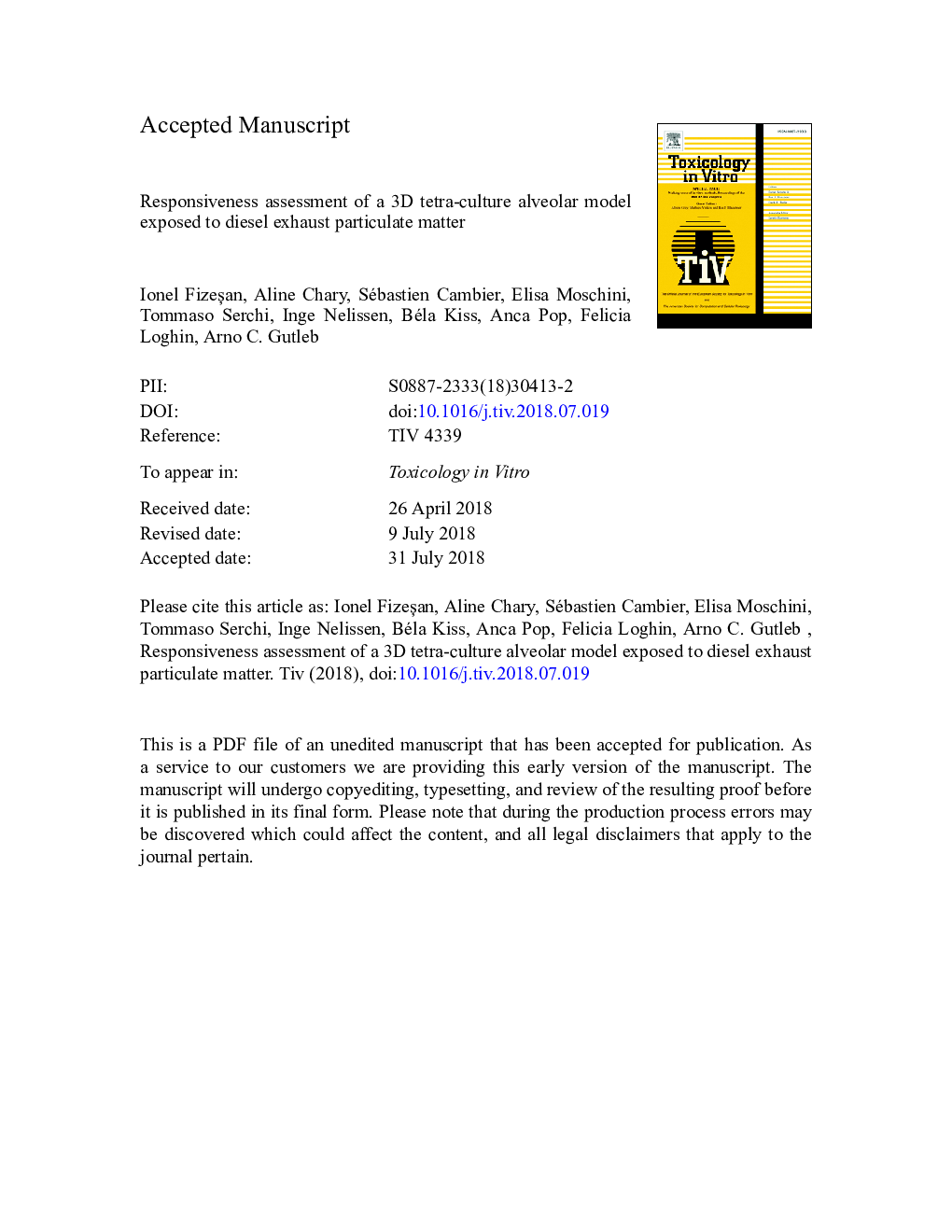| Article ID | Journal | Published Year | Pages | File Type |
|---|---|---|---|---|
| 8553715 | Toxicology in Vitro | 2018 | 50 Pages |
Abstract
The aim of the current study was to evaluate the responses of a 3D tetra-culture alveolar model cultivated at the air-liquid-interface (ALI) after apical exposure to diesel exhaust particulate matter (DEPM) based on the three-tiered oxidative stress concept. The alveolar model exposed to increasing doses of DEPM (1.75-5â¯Î¼g/cm2) responded with increasing activity of the anti-oxidant defense mechanisms (Nrf2 translocation, increased gene expression for anti-oxidant proteins and increased HMOX-1 synthesis) (tier 1). Higher exposure generated a proinflammatory response (NF-kB translocation, increased gene expression of pro-inflammatory cytokines and adhesion molecules, and increased IL-6 and IL-8 synthesis) (tier 2) and, finally, the highest doses applied resulted in a decrease of cell viability due to necrosis (extra-cellular release of LDH) or apoptosis (increased expression of the pro-apoptotic genes CASP7 and FAS) (tier 3). Overall, the results of our study demonstrate that the 3D tetra-culture model when directly exposed to DEPM potently generates a realistic response according to the three-tiered oxidative stress concept. Further evaluation and benchmarking against currently used in vivo rodent models is needed to show its suitability, and to serve in the future as an alternative for in vivo studies in the hazard evaluation of inhalable irritants.
Keywords
Related Topics
Life Sciences
Environmental Science
Health, Toxicology and Mutagenesis
Authors
Ionel FizeÈan, Aline Chary, Sébastien Cambier, Elisa Moschini, Tommaso Serchi, Inge Nelissen, Béla Kiss, Anca Pop, Felicia Loghin, Arno C. Gutleb,
